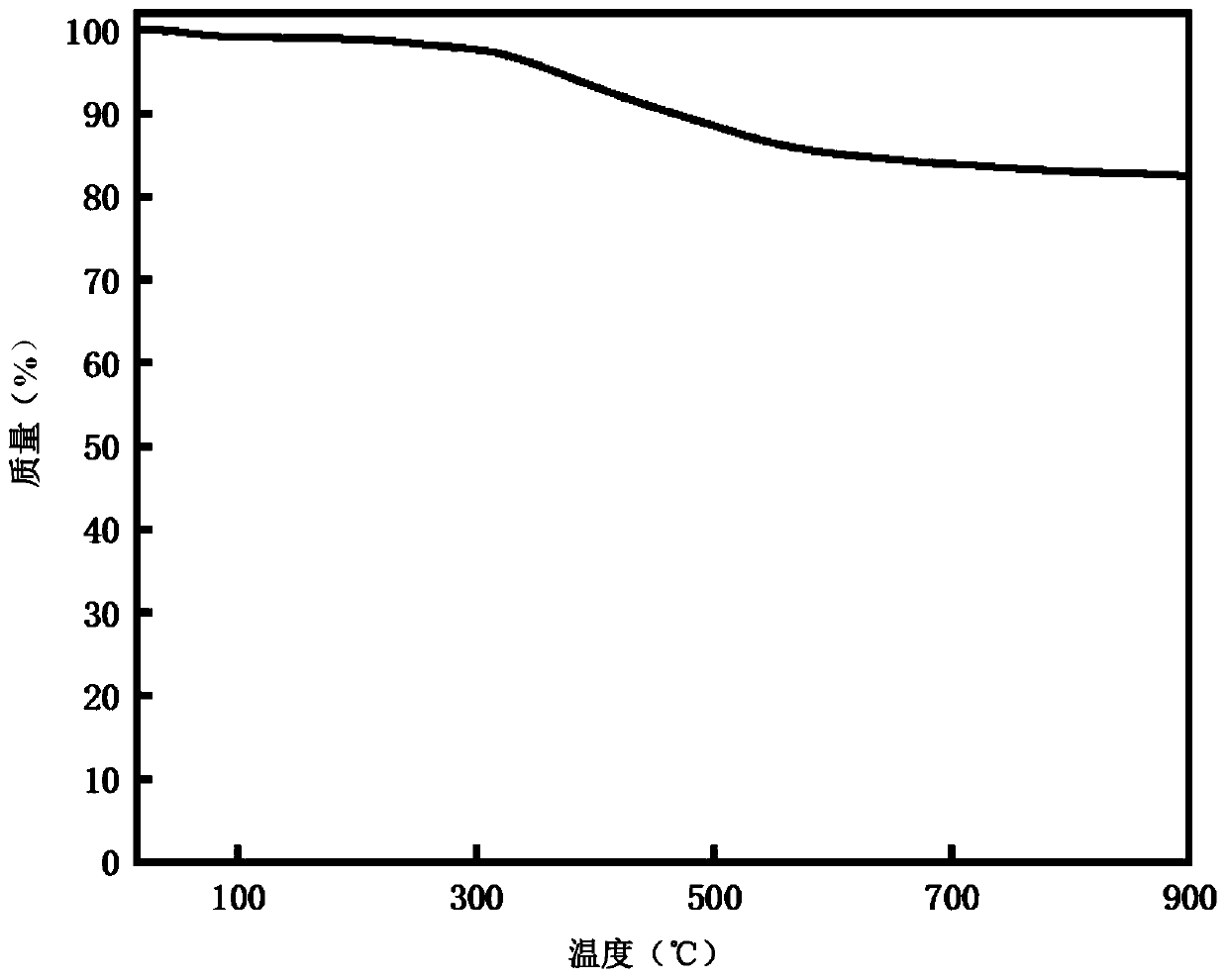Silica aerogel fiber with adjustable transparency and hydrophobicity as well as preparation method and application
A technology of airgel fiber and silica, applied in the direction of fiber chemical characteristics, textiles and papermaking, can solve the problems of uneven nanostructure, low thermal conductivity, weak mechanical properties, etc., and achieve weavability and easy processing and use Excellent, mild reaction conditions, simple preparation process
- Summary
- Abstract
- Description
- Claims
- Application Information
AI Technical Summary
Problems solved by technology
Method used
Image
Examples
preparation example Construction
[0046] Another aspect of the embodiments of the present invention also provides a method for preparing silica airgel fibers with adjustable transparency and hydrophobicity, which includes:
[0047] providing a spinning solution comprising a linear organosiloxane polymer having a multifunctional group;
[0048] Using a wet spinning method, injecting the spinning solution into an alkaline coagulation bath to obtain continuous silica gel fibers;
[0049] The silica gel fiber is dried to obtain the silica airgel fiber with adjustable transparency and hydrophobicity.
[0050] Wherein, in a more specific typical implementation case, the preparation method includes:
[0051] (1) Design and synthesize linear organosiloxane polymers with multifunctional groups, and then prepare spinning dope;
[0052] (2) Prepare an alkaline coagulation bath, and carry out a wet spinning method to obtain continuous silica gel fibers;
[0053] (3) The silica gel fiber obtained in step (2) is subjecte...
Embodiment 1
[0096] (1) Preparation of spinning dope: Using PMDS and TEOS as monomers at a molar ratio of 1:1, polycondensate in THF to prepare a multifunctional group linear organosiloxane with a number average molecular weight of 800. After testing, the polymer chain contains 5 ethoxy groups, 8 siloxane groups and 3 silanol groups; and then dispersing the obtained polymer in an ethanol solution to prepare a spinning stock solution with a mass fraction of an organosiloxane polymer of 10%;
[0097] (2) Wet spinning: prepare an aqueous solution of NaOH, the mass fraction is 0.1%, the diameter of the spinneret hole is 300 μm, the temperature difference between the spinneret hole and the coagulation bath is 10 ° C, and the temperature difference between the spinning solution and the alkaline coagulation bath is The solvent concentration difference is 80%, and the extrusion speed is 10 μl / min to obtain silica hydrogel fibers;
[0098] (3) Preparation of airgel fibers: the above-mentioned silic...
Embodiment 2
[0100] (1) Preparation of spinning dope: Use PMDS and TEOS as monomers with a molar ratio of 2:1, polycondensate in DMF to prepare a multifunctional group linear organosiloxane with a number average molecular weight of 5000. After testing, the polymer chain contains 16 ethoxy groups, 18 siloxane groups and 11 silanol groups; then the obtained polymer is dispersed in an ethanol solution to prepare a spinning dope with a mass fraction of an organosiloxane polymer of 40%;
[0101] (2) Wet spinning: prepare an aqueous solution of KOH, the mass fraction is 3%, the diameter of the spinneret hole is 300 μm, the temperature difference between the spinneret hole and the coagulation bath is 50 ° C, and the temperature difference between the spinning solution and the alkaline coagulation bath is The solvent concentration difference is 75%, and the extrusion speed is 150 μl / min to obtain silica hydrogel fibers;
[0102] (3) Preparation of airgel fiber: the above-mentioned silica gel fiber...
PUM
| Property | Measurement | Unit |
|---|---|---|
| contact angle | aaaaa | aaaaa |
| diameter | aaaaa | aaaaa |
| aspect ratio | aaaaa | aaaaa |
Abstract
Description
Claims
Application Information
 Login to View More
Login to View More - R&D
- Intellectual Property
- Life Sciences
- Materials
- Tech Scout
- Unparalleled Data Quality
- Higher Quality Content
- 60% Fewer Hallucinations
Browse by: Latest US Patents, China's latest patents, Technical Efficacy Thesaurus, Application Domain, Technology Topic, Popular Technical Reports.
© 2025 PatSnap. All rights reserved.Legal|Privacy policy|Modern Slavery Act Transparency Statement|Sitemap|About US| Contact US: help@patsnap.com



